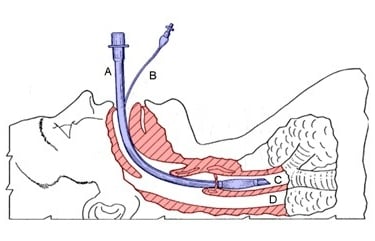Anesthesia Ventilators: How New Tech Improves Patient Safety and Outcomes
Anesthesia ventilators are essential components of the modern anesthesia workstation, ensuring adequate respiratory support for patients under general anesthesia. Over the past decade, significant technological advancements have enhanced their precision, safety features, and adaptability to various clinical scenarios. This article explores recent innovations in anesthesia ventilators, their clinical impact, cost considerations, and key players in the market.
MK Waikwa
4/6/20252 min read


Recent Innovations in Anesthesia Ventilator Technology
1. Precision in Gas Delivery
Modern ventilators use microprocessor-controlled delivery systems that offer high accuracy in tidal volume and pressure regulation, reducing the risk of volutrauma and barotrauma, especially in pediatric and low-compliance lungs.
2. Advanced Ventilation Modes
New ventilators support a wider range of ventilation modes, including:
Pressure-Controlled Ventilation (PCV)
Volume-Assured Pressure Support (VAPS)
Synchronized Intermittent Mandatory Ventilation (SIMV)
Pressure Support Ventilation (PSV) These modes allow for better tailoring of ventilation to patient physiology, enhancing oxygenation and reducing complications.
3. Integrated Monitoring and Alarms
Ventilators now feature real-time waveform displays and built-in monitoring for tidal volume, airway pressure, compliance, and end-tidal CO₂. Smart alarms and predictive analytics enhance early detection of anomalies, improving response times.
4. Enhanced User Interfaces
Touchscreen interfaces with customizable displays, ergonomic design, and intuitive settings reduce operator error and improve workflow efficiency in high-pressure OR environments.
5. Automated Leak Compensation and Compliance Adjustment
These features improve accuracy during mask ventilation and reduce manual intervention, particularly valuable in pediatric and high-risk patients.
Clinical Advantages
Improved Patient Safety: Real-time monitoring and predictive alarms allow for immediate intervention.
Reduced Postoperative Complications: Better control over lung mechanics minimizes the risk of atelectasis and hypoxia.
Adaptability to Complex Cases: Enhanced modes and sensors support patients with variable pulmonary dynamics or pre-existing respiratory compromise.
Cost Range of Anesthesia Ventilators
High-End Models (GE Healthcare, Dräger, Mindray): $15,000 to $40,000
Mid-Tier and Generic Brands (Penlon, Comen, BPL, Aeonmed): $7,000 to $15,000
Refurbished Units: $3,000 to $10,000 depending on condition and features
Key Manufacturers
GE Healthcare (Aisys CS2, Avance CS2): Renowned for integration with anesthesia information systems and robust monitoring capabilities.
Dräger (Perseus A500, Fabius Plus): Known for precision, durability, and advanced ventilatory modes.
Mindray (WATO Series): Offers high-quality performance with budget-friendly models.
Penlon (Prima Series): UK-based provider focusing on reliability and essential features.
Comen & Aeonmed: Popular in resource-limited settings and for modular solutions.
Generic and Cost-Effective Alternatives
Emerging manufacturers, particularly from Asia, are producing FDA-cleared and CE-marked ventilators offering many of the same features as premium brands at a lower price. While often lacking proprietary software or high-end integration, they are increasingly used in surgical centers and low-resource hospitals.
Conclusion
Technological advancements in anesthesia ventilators have significantly enhanced perioperative patient care by improving precision, safety, and clinician usability. Understanding these innovations, evaluating cost-effectiveness, and selecting equipment aligned with institutional needs empowers anesthesiologists to deliver safer and more efficient anesthesia care.
